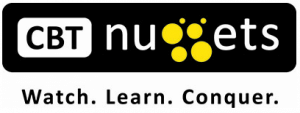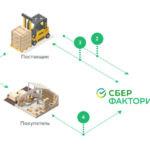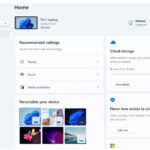Год выпуска: 2013
Производитель: CBT Nuggets
Автор: Jeremy Cioara
Продолжительность: 13:40:28
Тип раздаваемого материала: Видеоурок
Язык: Английский
Стоимость: 1999 рублей
Описание : Экзамены Cisco CCNA были изменены! Узнай все, что тебе нужно знать для нового экзамена ICND2 в этих видеоуроках.
Джереми Сиора охватывает все темы нового экзамена ICND2 включая VPN, EIGRP, OSPF, HSRP, GLBP, и ,конечно, IPv6! Чтобы сдать экзамен "200-201", Вам нужны глубокие знания этих тем. Джереми, в этих видео начинает с лабораторной "зубрежки" из 5 частей, чтобы убедиться, что Вы обладаете необходимыми базовыми знаниями, для изучения ICND2.
Эти видеоуроки углубляются в темы ICND2, чтобы дать Вам знания для успешной сдачи экзамена.
[wpspoiler name="Подробное описание" ]
1. Welcome to ICND2: Cisco Certification and Getting the Most from this Course (00:16:15)
You've made it to the ICND sequel; let's start it off right! In this opening Nugget, Jeremy describes the ICND2 certification (keyword: enrich!), walks through the Cisco certification program and study techniques you can use to approach the ICND2 exam.
2. ICND1 Review Lab, Part 1: Base Configurations (00:21:04)
Welcome back! As ICND2 builds directly on the foundation of ICND1, it will serve you well to have an ICND1 "cram session." For the next five Nuggets, join Jeremy as he walks through a lab that covers most of the core concepts of the ICND1 course. In this Nugget, the focus is on the base configuration (hostname, passwords, console port configuration, logon banners, etc...).
3. ICND1 Review Lab, Part 2: IP Addressing (00:17:09)
The ICND1 Review Lab continues with the configuration of IP addressing around the network (switch and router devices) and the hard coding of speed and duplex.
4. ICND1 Review Lab, Part 3: OSPF Configuration (00:27:35)
Now the ICND1 Review lab gets good! This Nugget walks through the configuration of single-area OSPF and static routing.
5. ICND1 Review Lab, Part 4: VLAN Configuration (00:29:54)
What's a network without VLANs?!? This MONSTER Nugget shows the configuration of trunk ports (limited to specific VLANs), VTP, Router on a Stick, DHCP services, and Inter-VLAN routing! Whew!!
6. ICND1 Review Lab, Part 5: NAT and Security (00:29:33)
In this final Nugget in the ICND1 Review Lab, Jeremy tackles the configuration of NAT and access control lists (ACLs). Warning: The ACL configuration gets a little more complex than was intended; welcome to the "real world"!
7. Spanning Tree Protocol: Understanding STP (00:38:25)
It's the number-one weakness of most network engineers' understanding: Spanning-Tree Protocol (STP)! Because this gem of a protocol is on and works fairly well by default, most engineers don't spend time to learn about it, much to the detriment of their network environment. In this Nugget, Jeremy talks about the benefits of switch redundancy, broadcast storms and how STP works, including root bridge election, port selection and convergence.
For more information on Spanning Tree Protocol, check out Jeremy's Spanning Tree Protocol Configuration MicroNugget here.
8. Spanning Tree Protocol: Enhancements to STP (00:21:31)
Spanning Tree Protocol (STP) is a fairly old protocol and existed during a time when brief outages were considered normal and acceptable. That's not the world we live in anymore! In this Nugget, Jeremy discusses the STP port transitioning process (blocking, listening, learning, forwarding), portfast, Per VLAN STP and Rapid STP.
9. EtherChannel: Bundling Gobs of Bandwidth (00:33:16)
Just when you get done with Spanning-Tree Protocol (STP) and realize just how wonderful it is, Jeremy says, "...but there's a better way!" Welcome to EtherChannel! In this Nugget, you'll learn the advantages of using EtherChannel over STP, the PAgP and LACP negotiation protocols, and the EtherChannel configuration, verification, and troubleshooting.
10. First Hop Redundancy Protocols: Understanding HSRP, VRRP, and GLBP (00:18:50)
It's acronym soup! This Nugget is dedicated to unpacking the concepts behind layer 3 (router) redundancy. You will learn what First Hop Redundancy Protocols (FHRPs) do, the difference between the protocols and the detailed concepts of HSRP and GLBP.
11. First Hop Redundancy Protocols: Configuring HSRP, VRRP, and GLBP (00:41:37)
Become an HSRP Master in four easy steps! This Nugget is dedicated to unpacking the HSRP in all its glory. You'll learn about standby IP addresses, interface tracking, authentication, timers, priority, preempt and more!
12. First Hop Redundancy Protocols: Configuring HSRP, VRRP, and GLBP, Part 2 (00:27:56)
This Nugget picks up right where the last one left off and covers the VRRP and GLBP protocols.
13. WAN: Understanding WAN Connection Types (00:42:31)
One of the key differentiation points between ICND1 and ICND2 is the focus on single-site (ICND1) or multi-site (ICND2). In this Nugget, Jeremy discusses the place of WAN connections, the physical connections, types of WAN connections (including circuit switched, packet switched, leased lines) and walks you through the leased line configuration of HDLC, PPP, and CHAP (PPP Authentication).
14. Frame Relay: Understanding Frame Relay (00:23:39)
Welcome to the world of Packet Switched networks! Frame Relay is the token technology that typically represents the concepts behind ALL Packet Switched network technology. In this Nugget, Jeremy breaks down the Frame Relay concepts and terms, especially focusing on the Data Link Connection Identifier (DLCI).
15. Frame Relay: Understanding Frame Relay, Part 2 (00:24:31)
The Frame Relay discussion continues as Jeremy looks at multiple design strategies: full mesh, partial mesh, hub-and-spoke, point-to-point and multipoint.
16. Frame Relay: Configuring Frame Relay (00:41:33)
Buckle your seat belts - this one comes at you fast! In one action-packed Nugget, you'll learn the configuration of Frame Relay Multipoint, Point-to-Point and even Frame Relay switching (Service Provider-side of the game)!
17. VPNs: Understanding Big-Picture VPN Concepts (00:27:40)
The concept is "Virtual" Private Networks (VPNs)...but are they REALLY private? How secure is this technology? In this Nugget, Jeremy breaks down the concepts behind VPNs including the types of VPNs (Remote Access/Site-to-Site), VPN requirements (authentication, data integrity, confidentiality, and anti-replay) and IPSsec.
18. VPNs: Understanding Authentication, Encryption, Hashing (00:23:12)
So your boss asks you, "What makes you so sure this VPN thing is secure?" Well, after this Nugget, you'll have a solid answer (and it's more than, "Because Jeremy said so!"). In this Nugget, you'll walk through the details of encryption (DES, 3DES, AES, Diffie-Helman, and RSA), authentication (pre-shared keys and PKI) and and hashing (MD5, SHA-1).
19. EIGRP: Distance Vector and Link State Routing Protocols (00:23:39)
Which would you rather drive: a tractor or a sports car? Find out the RIGHT answer in this Nugget as Jeremy breaks down the difference between Distance Vector and Link State Routing Protocols. In addition, you'll learn the various Distance Vector Loop Prevention mechanisms: maximum distances, route poisoning, triggered updates, split horizon and hold down timers.
20. EIGRP: The Benefits, Terms, and Metrics of EIGRP (00:29:55)
What makes EIGRP great? How does it really work "under the hood"? What is the theme song for Mr. Roger's Neighborhood? The answers to all of this and more in this Nugget!
21. EIGRP: Configuring EIGRP (00:46:15)
It's time to put all those EIGRP concepts into action! Join Jeremy as he walks through base EIGRP configuration, auto-summarization, manual summarization, verification, authentication and passive interfaces. We simply couldn't fit any more into this Nugget!
22. OSPF: Concept Review and Neighbor Communication (00:46:25)
Welcome back to the OSPF world! The ICND2-flavor of OSPF adds a little more "meat" to the topic that was originally introduced in ICND1. In this Nugget, you'll learn about the big-picture design of a multi-area OSPF environment, a breakdown of OSPF neighbor communication, and an understanding of the OSPF metric.
23. OSPF: Multi-Area Configuration and Verification (00:40:19)
Get your brain ready for this one-this Nugget is ALL configuration! Join Jeremy as he reviews the configuration of single area OSPF (from ICND1), creates Area Border Routers (ABRs) and Autonomous System Boundary Routers (ASBRs) and implements summarization at both ABR and ASBR locations.
24. Device Management: Configuration, IOS, and Licensing Management (00:33:32)
What's scarier: jumping out of an airplane or remote IOS upgrades? Jeremy argues the latter! In this Nugget, you'll learn the IOS boot and upgrade process, file management, and IOS 15 licensing.
25. Device Management: SNMP, Syslog, and Netflow (00:40:04)
For DECADES, Cisco has missed adding key monitoring and management methods to their certification program. As of 2013, those methods have made their way into the ICND2 course! Learn the critical skills of monitoring (with SNMP), logging (with syslog), and tracking (with Netflow).
26. IPv6: Concept Review and General Troubleshooting (00:30:58)
IPv6...it's just like rolling down a grassy hill after 30 years (okay, just watch this Nugget and you'll understand). By time you're done here, you'll understand Link Local and Global IPv6 addressing, IPv6 base configuration, and troubleshooting.
27. IPv6: Routing Protocol Configuration (00:23:10)
IPv6 routing protocols: configuration-wise everything has changed and yet conceptually nothing has changed at all! In this Nugget, Jeremy applies the skills you learned in working with the IPv4 flavors of EIGRP and OSPF and bridges them over to the IPv6 configuration.[/wpspoiler]



